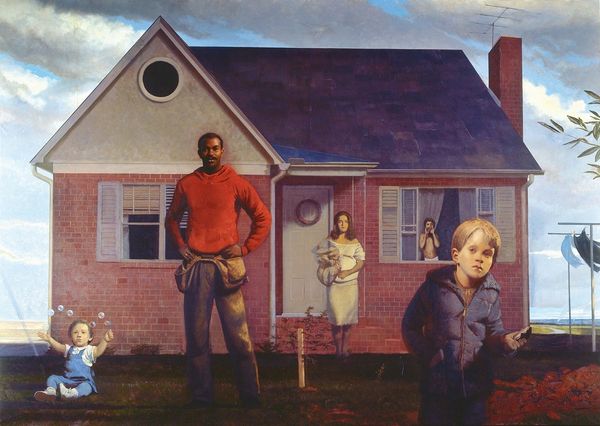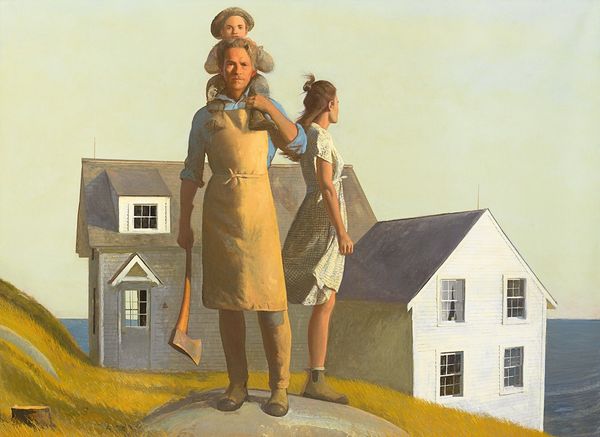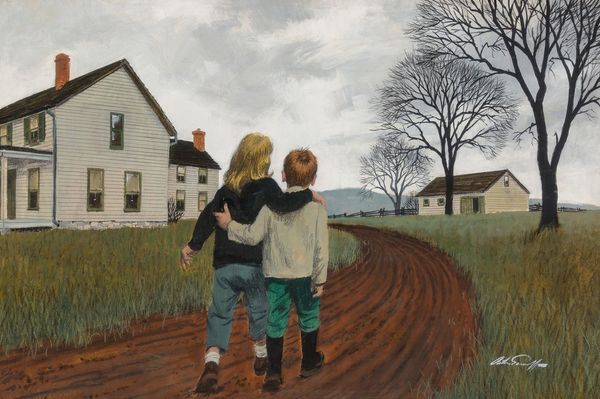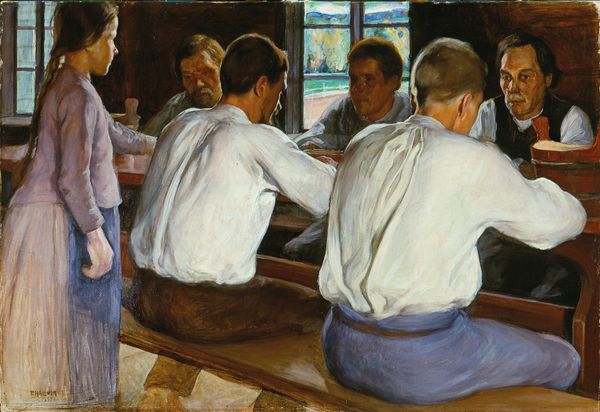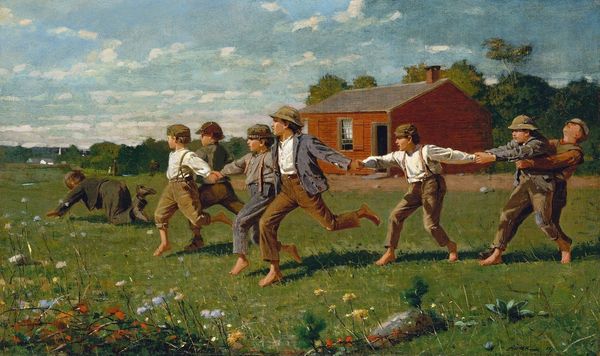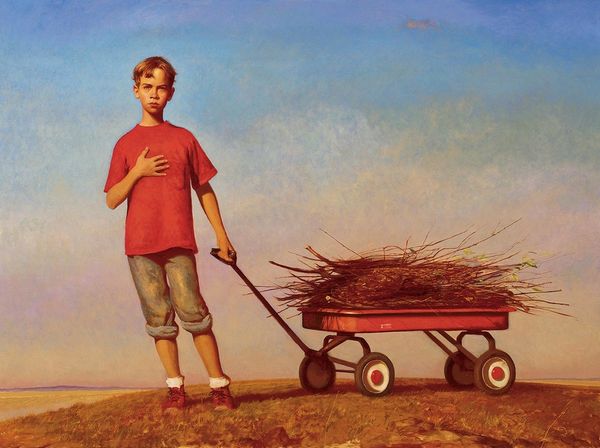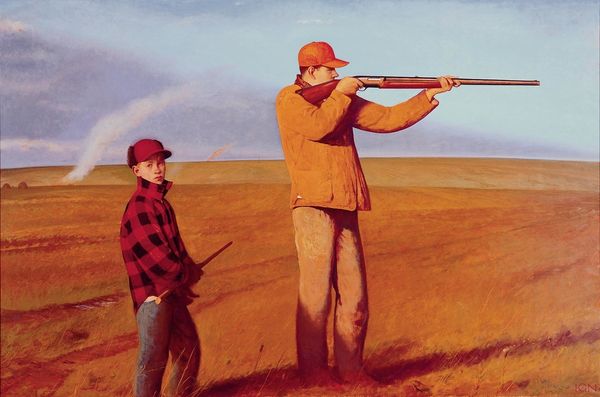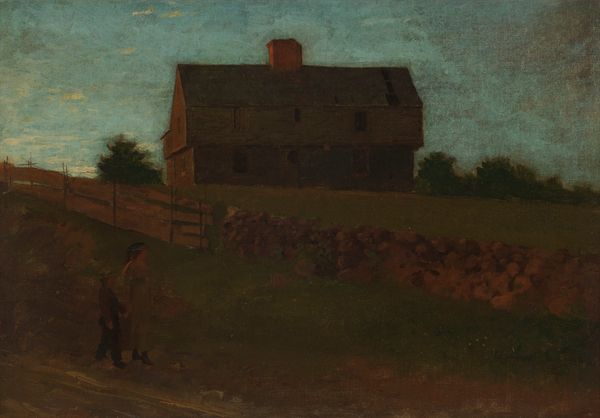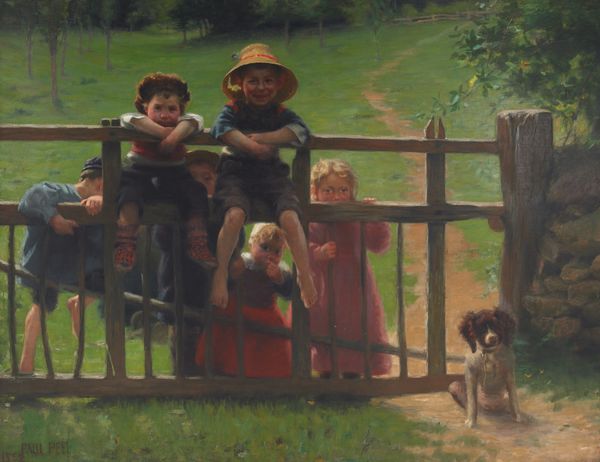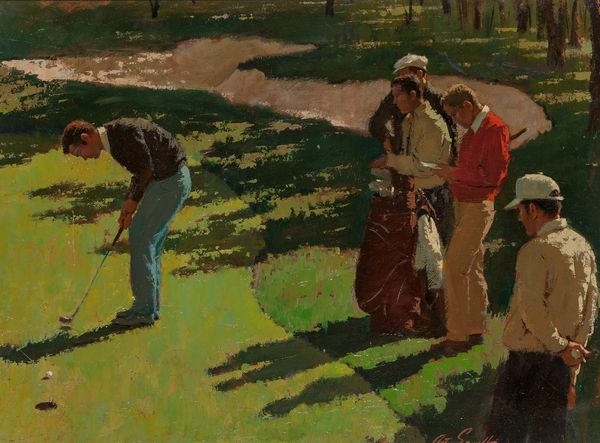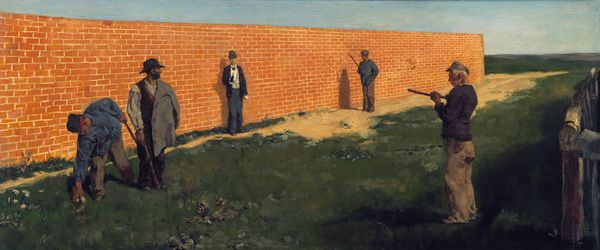
Copyright: Modern Artists: Artvee
Editor: Here we have Bo Bartlett's "Firefly," created in 1993 using oil paint, I believe en plein air. The work features two boys amidst a sprawling field. I'm struck by how the subtle tonal shifts capture the twilight, creating this beautiful, serene atmosphere. How do you interpret this work, looking at its formal elements? Curator: Indeed, the painting hinges on its formal structure. Note the stark horizontal division, cleaved between the earthbound figures and the illuminated, graded sky. The children act as vertical anchors, their pale shirts echoing the lighter tones above and punctuating the dark mass below. Observe, too, how the perspective flattens, pushing the red buildings into nearly the same plane as the figures. How do you think these color relations affect your interpretation? Editor: It creates a very unified scene. The reddish hue of the buildings finds an echo in the figures, uniting foreground and background, land and figure. The way he juxtaposes the flatness and the depth suggests this slightly detached feel... a sort of dreamlike romanticism. Curator: Precisely. It moves into the ethereal precisely by deploying familiar compositional constructs. Focus your attention on the halos created by the afterglow and what these tonal adjustments reveal. It's a highly calculated move; Bartlett seems intent on portraying this twilight moment as almost sacred or magical, not quite of this earth. In painting such an accessible scene of the everyday, yet in using formal choices that pull into the realm of transcendence. Editor: I see. So, even with a seemingly simple subject matter, the power of the composition and the play of light elevate the moment. The artist directs our emotional reading with strategic choices in technique and execution. Curator: Exactly. A deeper look at even familiar art unveils a symphony of constructed ideas, embedded in brushstrokes and composition.
Comments
No comments
Be the first to comment and join the conversation on the ultimate creative platform.
